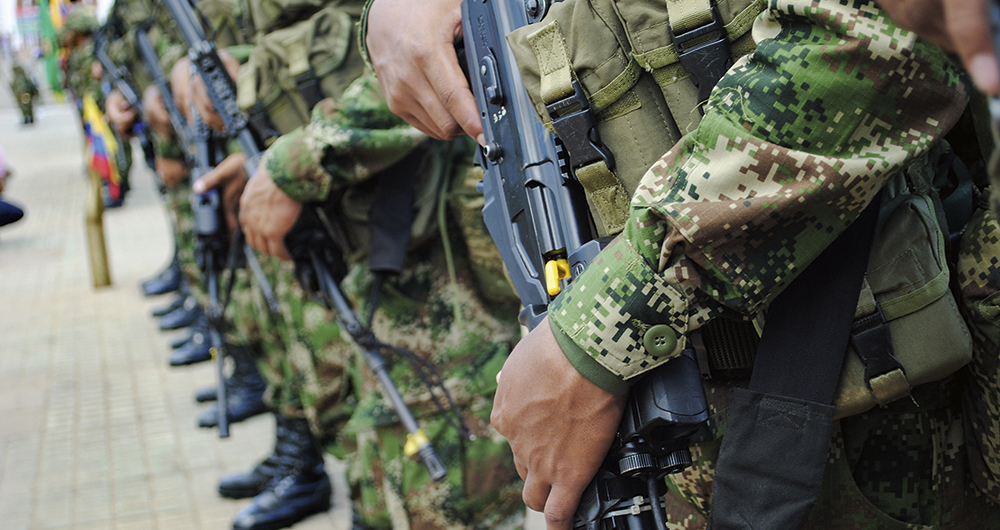
The issue of sexual harassment within the Spanish Armed Forces has been a matter of concern, with recent reports shedding light on the challenges faced in addressing and effectively penalizing such behavior. This article delves into the findings of the latest report from the Observatory of Military Life, an entity overseen by the Cortes Generales, examining both disciplinary and legal proceedings and their outcomes over a seven-year period from 2016 to 2022.
Overview of the Data
Over the specified period, there were 219 reported cases of sexual harassment within the Armed Forces, indicating a prevalence rate of 0.016% of active military personnel in 2016, rising to 0.032% in 2021. These reports led to the initiation of 112 criminal proceedings within the military jurisdiction and 157 disciplinary proceedings overseen by the military chain of command.
Disciplinary Proceedings
Of the 157 disciplinary proceedings initiated, a staggering 63% resulted in no culpability. Excluding cases still under review, only 10.7% of complaints concluded with sanctions, indicating a significant gap in accountability within the disciplinary framework. It is noteworthy that in some instances, the classification of the offense was altered, potentially resulting in punishment for a different transgression rather than sexual harassment.
Legal Proceedings
Within the realm of legal proceedings, 112 cases were opened, with 42 still pending. Among the concluded cases, over half (51.4%) resulted in dismissal, while only 25.7% ended in conviction for sexual harassment. Notably, in a portion of cases, the charge was altered, indicating potential punishment for a different offense. Despite fewer legal cases compared to disciplinary ones, the proportion of convictions was higher, underscoring the effectiveness of legal avenues in addressing sexual harassment.
Comparative Analysis
An examination of the combined outcomes reveals that only 16.23% of concluded proceedings resulted in penalties, either through legal convictions or disciplinary sanctions. However, the proportion of convictions within legal proceedings exceeded that of disciplinary sanctions, despite the lower number of legal cases. This suggests a potential disparity in the effectiveness of the two systems in addressing sexual harassment.
Factors Influencing Outcomes
Several factors may contribute to the differential outcomes observed in disciplinary and legal proceedings. One significant distinction lies in the level of involvement granted to the victim; legal proceedings afford victims the opportunity to participate actively, providing evidence and testimony, whereas disciplinary proceedings limit their role to filing the initial complaint. Additionally, the composition of decision-making bodies differs, with a majority of judges in military courts being female, while male predominance persists within military leadership.
Analysis of 2022 Data
In 2022, 38 complaints were filed, involving 42 alleged perpetrators, the majority of whom were male. Notably, while women constitute nearly 13% of the Armed Forces overall, their representation increases to 37% within common corps, including legal personnel. Among the accused, six were officers, nine were non-commissioned officers, and 27 belonged to the enlisted ranks. Regarding complainants, 35 were female and five were male, with varying ranks and civilian status.
Role of Units for Protection Against Harassment (UPA)
The report highlights the pivotal role of Units for Protection Against Harassment (UPA) in facilitating the reporting process, as virtually all complaints were channeled through these units. Established in 2015 as part of protocols addressing sexual and gender-based harassment, UPAs not only process complaints but also provide support, including educational initiatives aimed at fostering awareness and prevention among military personnel.
Conclusion
In conclusion, the findings underscore the complexities inherent in addressing sexual harassment within the Spanish Armed Forces. While both disciplinary and legal avenues exist for accountability, significant disparities in outcomes persist. Addressing these disparities requires a multifaceted approach, including enhanced victim participation, training for military leadership, and continued reinforcement of reporting mechanisms. By fostering a culture of accountability and respect, the Armed Forces can strive towards ensuring a safe and inclusive environment for all personnel.

